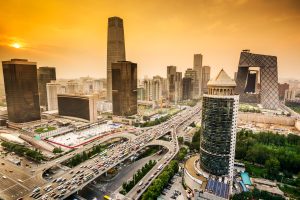From July 15-18, the 20th Central Committee of the Chinese Communist Party – the top governing body of China’s ruling party – will convene for its much-anticipated “third plenum.” Since the beginning of the reform and opening era, each Central Committee’s third plenum has long set the policy direction for China’s economy. However, this iteration will happen far behind the usual schedule. Traditionally, the third plenum convenes a year after the CCP’s National Party Congress, last held in October 2022. Accordingly, the third plenum was expected in October or November of 2023. Instead, it was delayed until July 2024.
The nine-month gap between the expected timing and the actual convening of the plenum sparked much speculation about debate and disagreement regarding economic policy occurring within the black box of the CCP. To help set the scene, The Diplomat’s Shannon Tiezzi interviewed Sara Hsu, an associate professor at the University of Tennessee, Knoxville, and an expert on China’s supply chains, fintech, and economic development, about China’s economic trajectory since the 20th National Party Congress in the fall of 2022.
Hsu explained that China’s economy faces two equally daunting challenges: internal structural issues and a hostile external environment. “China’s ongoing government-backed economic policy is viewed by the United States in particular as a threat to national security,” she said. “…This is at least as much of a barrier to growth as China’s internal issues.”
China’s government and the CCP insist that the economy is not facing any serious struggles, while many external analysts are convinced there are major structural deficits that need to be addressed urgently. How would you evaluate the current health of China’s economy?
Not only are there structural deficits in China’s economy that need to be addressed, but there is an economic ideological clash with the West that will prevent China’s government-led growth path from reaching success.
The structural deficits are related to China’s growth slowdown in the real estate sector, aging population, excessive local government debt, and youth unemployment. These issues have been discussed and in the making for years. However, it is China’s overall economic strategy that reflects a contrasting stance with the West.
A major issue is that just as China is promoting areas such as electric vehicles, lithium batteries, and solar cells, the West sees China’s government support for these industries as a threat and has increased tariffs accordingly. China’s ongoing government-backed economic policy is viewed by the United States in particular as a threat to national security, as many of China’s recent policy measures have backed innovative industries. This has led to major improvements in technology as well as in overcapacity in some areas.
The U.S. is concerned that China will flood the U.S. market with innovative products that may present a security risk. This is at least as much of a barrier to growth as China’s internal issues.

































